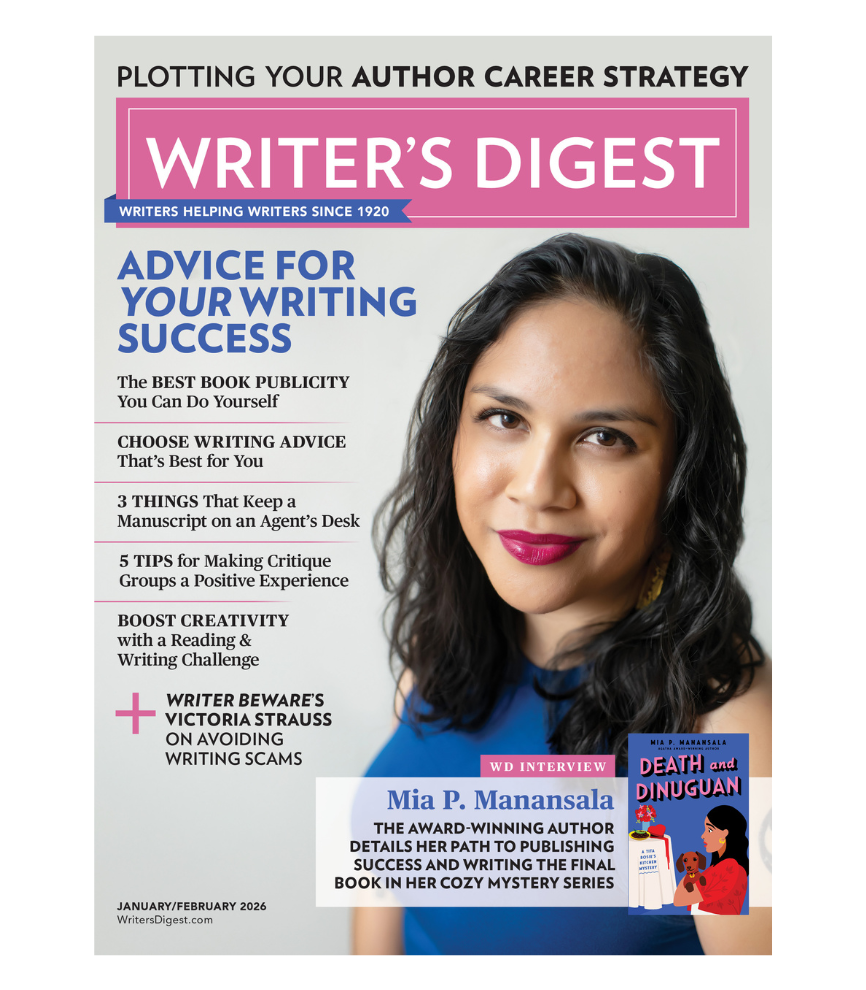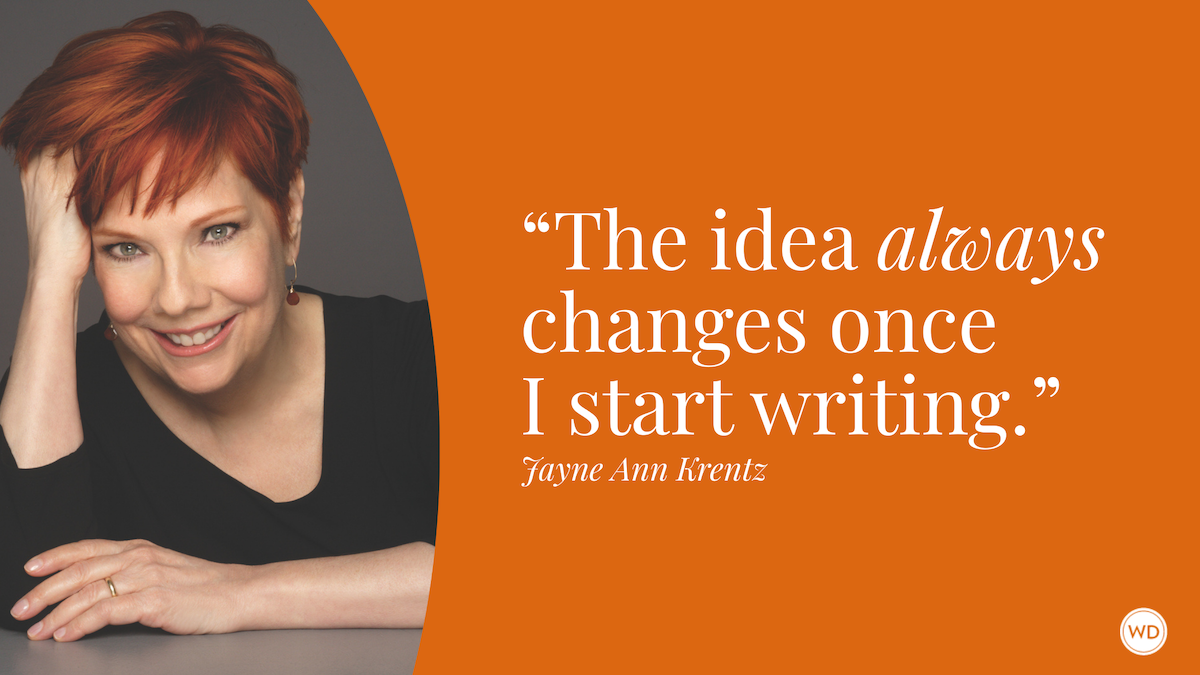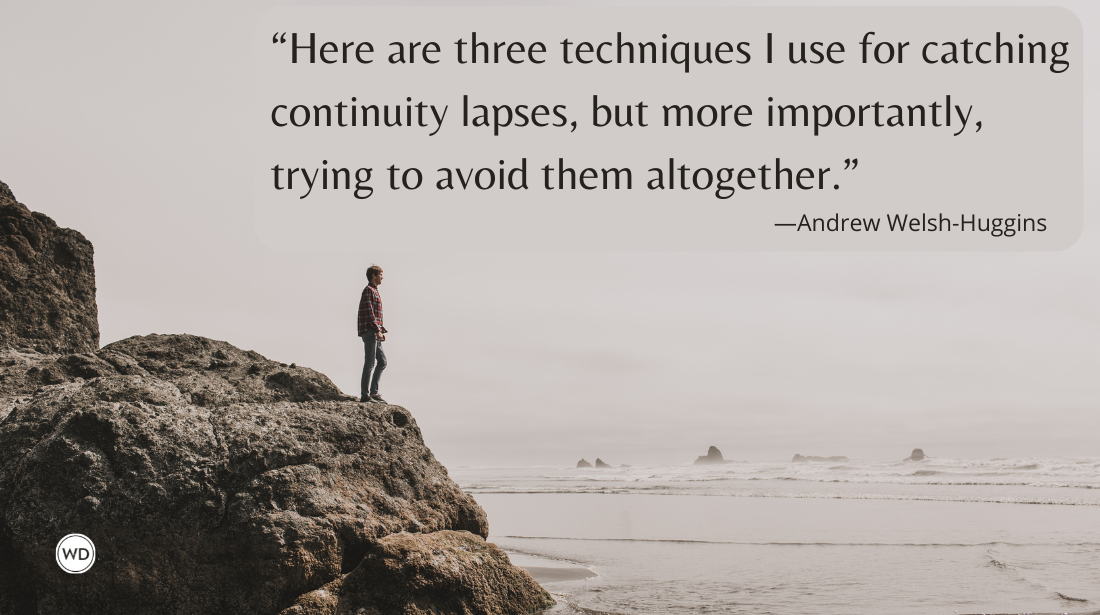Making Magic: Mastering the Art of Magical Realism
Magical realism is a literary genre grounded in reality and imbued with mystical elements. Conjure the extraordinary on the page with these techniques.
Ever since I started writing as a kid, unusual things have happened in my well-grounded stories. A man named Harold sprouted a flower on his head. A line of seemingly nonsensical text became a secret code (“Tulips are on sale in Kanagawa—the place.”). A tree sprouted in a girl’s innards after her father fed her a cherry stone. A rabble of butterflies inspired a lusty softening of the heart. And in my novel, The Art of Floating, it’s not quite clear whether a mysterious man who just walked out of the sea is alien, fish, or lost soul.
Early on, friends and family dubbed my work “the odd stuff Kristin writes,” and it wasn’t until a literature class in college that I realized there was a name for it—magical realism—and that an honorable lineage of writers had been writing such “odd stuff ” for years.
IndieBound | Bookshop | Amazon
[WD uses affiliate links.]
Brilliant authors like Gabriel García Márquez, whose One Hundred Years of Solitude introduced the world to the fictional town of Macondo and generations of the Buendía family whose lives are touched again and again by unusual and magical occurrences; Audrey Niffenegger, whose much more recent The Time Traveler’s Wife makes you believe in the possibility of tumbling through time, as well as extraordinary love; the venerable Toni Morrison, who summoned the ghost of Sethe’s child in Beloved; and Japanese author Haruki Murakami, whose 1Q84 commingles two representations of the same world so adeptly that you end up saying, “Wait, wait, back up! What is real here?” for more than 1,000 pages.
Origin
According to history, German art critic Franz Roh coined the term magical realism in a 1925 essay and subsequent art book Nach Expressionismus: Magischer Realismus: Probleme der neuesten europäischen Malerei (After Expressionism: Magical Realism: Problems of the newest European painting). While he initially used the term to describe an artistic shift from abstraction to figural representation, the meaning grew muddy and controversial, and, soon after, the term fell out of fashion in the art world—as things tend to do. Sometime in the 1960s when literary folks needed an appropriate descriptor for One Hundred Years of Solitude, the term magic realism was resurrected and reshaped by the literary community. “How else,” they likely argued over whiskey and beer, “can we describe a novel that so stunningly straddles the magical and the realistic—a novel in which Remedios the Beauty ascends into the sky while folding a sheet, and Melquíades, the gypsy, dies not once, but twice?”
In this case, the term stuck. But what magical realism really is, what defines the genre, and just who the heck’s work gets to be categorized as magically realistic has become one of the hottest debates in the literary community. Highbrow purists with fists in the air argue that only Latin American authors write authentic literature in this genre. Hybrids argue that magic realism crosses all borders and boundaries, and that it’s more about the characteristics of the story than the place from which the author hails.
Because this debate tends to get bloody depending on the parties involved, I advise writers drawn to this magnificent genre to steer clear of the whole damn conversation and accept that, while magic realism may (or may not) have been birthed in Latin America, it has evolved and traveled. Stick to the writing and the ongoing development of your craft. After all, while the debate rages on, writers continue to create intoxicating stories that fall into the magically realistic genre. Just take a look at Sarah Addison Allen’s The Girl Who Chased the Moon and Eowyn Ivey’s The Snow Child.
Magical Realism: What It Is (And Isn't)
Once again, a magically realistic story is one that is deeply grounded in a realistic place and situation but in which odd, unusual and magical events occur. While reading such a tale, you may never be 100 percent sure what is real and what is not.
It’s a bit like looking at one of those images that occasionally trends on Facebook in which the first time you glance at the image you see a sheep, but if you stare and let your eyes go soft, you see an alien.
Glance: sheep.
Stare and soften: alien.
The complete image is made up of the two smaller images, but they’re so artistically blended that you’re never truly sure what you “should” see. And, in fact, there is no image that you “should” see because the story—if well crafted—is a perfectly balanced combination of the two.
One thing that writers do need to keep in mind—and one thing over which critics do not draw blood—is that magic realism is not the same as science fiction or fantasy. While these three genres share certain qualities, they differ greatly. In science fiction and fantasy, the line between what is real and what is magical or mystical is clear and distinct; in magic realism, it’s fuzzy. In science fiction and fantasy, new worlds are often created; in magic realism, it’s the same old world with interesting nuances. Science fiction and fantasy are often escapist; magic realism rarely is. And in science fiction and fantasy, rational explanations are provided for unusual occurrences. Do not expect an explanation in a magically realistic story. Things just are.
Nuts and Bolts
Before you set out to write your magically realistic tale, consider the nuts and bolts of the genre.
- PLACE: A realistic sense of place will help to move your story forward and facilitate magical occurrences. In the first chapter of The Time Traveler’s Wife, Niffenegger introduces us to the unique features of Chicago’s Newberry Library. Eventually, we learn that Henry is petrified of landing in the library’s “cage” when tumbling through time because it has no exit. It’s the perfect setup.
- FANTASTICAL ELEMENTS: In a magically realistic story, characters can levitate, implode, move objects with their minds, travel through time, speak languages they never were taught to speak and much more. As long as you weave your carefully chosen fantastical elements into the realistic fabric of your story, anything goes.
- HABITS, BELIEFS AND QUIRKS: Use your characters’ habits, beliefs and quirks to instigate or heighten the magical elements in your story. The fact that Clare Abshire in The Time Traveler’s Wife is a paper artist becomes more integrated with Henry’s time travel as the story progresses. In 1Q84, Aomame’s antisocial, über-efficient ways play right into the development of the plot. Keep in mind that figuring out which habits, beliefs and quirks best lend themselves to your story takes time and many drafts. Don’t rush it.
- TONE: Magically realistic stories are told without astonishment. Narrators don’t run around yelling, “Oh, my god! I can’t believe a ghost just sat down to dinner with us!” If a woman drifts away or a man travels through time or a woman climbs down a staircase from a highway and enters a different reality, the narrator shares that information in the same tone she’d use to inform you she was out of ketchup.
- NARRATOR’S AUTHORITY AND RETICENCE: Your narrator is the big boss who isn’t interested in explaining things to readers. If a ghost sits down for dinner or a mysterious taxi driver points someone to a questionable stairwell, the narrator is not going to lean forward, give a wink and whisper, “Here’s how it works …” This would shatter readers’ trust in the characters’—and the world’s—credibility.
- TIME: In many magically realistic stories, time is fluid and cyclical, not rigid and linear. Now, then, the distant future, the distant past, yesterday, today, tomorrow—it’s all good. One Hundred Years of Solitude, for example, opens with a flashback that stretches all the way back to a time when “[t]he world was so recent that many things lacked names, and in order to indicate them it was necessary to point.” But in some stories, like Aimee Bender’s The Particular Sadness of Lemon Cake, time is persistent and unidirectional. Make good use of this great flexibility with time. Decide which is best for your story, and then run with it.
- RULES AND REGULATIONS: Every establishment is governed by specific rules and regulations—towns, churches, governments, parks, schools, sales forces, families, friendships, marriages, genders, etc. In a magically realistic story, you can manipulate those rules. For example, in Japan during rush hour on a highway, a woman would never get out of a car, take off her shoes, and walk to a staircase reserved for emergency workers. In 1Q84, Aomame does just that. As the writer, you must know the rules of the reality you present; only then can you allow characters to break those rules and see what gets stirred up.
- HYBRIDITY: Multiple planes of reality are common in magically realistic stories. In 1Q84, two “versions” of the realistic world exist at the same time, and in The Time Traveler’s Wife , present-day Henry often time travels to a period in which a younger or older Henry exists. Thus, often there are two Henrys present. Such hybridity allows you, the writer, an opportunity to reveal a deeper truth about the world that you wouldn’t by simply representing one reality.
Magical Ideas
Ever since I began writing, I’ve been a collector. Not of things—shells, stamps, figurines, stuffed monkeys, autographs, etc.—but of possibilities. Odd happenings and images from around the world and in my dreams that could—and often do—make their way into my writing. While many might be considered mundane observances, paired with the right character in the right situation, I know they’ll make terrifically fantastic occurrences.
In recent years, these possibilities have included a giant eyeball that washed up on a beach in Florida; thousands of rotten pigs floating down the Huangpu River in Shanghai; an Arctic flower that was regenerated after 32,000 years of dormancy in a squirrel’s burrow; 7,700 people who were sterilized against their will between 1933 and 1977 as an experiment in genetic engineering; a man who sells the moon; the death of the world’s tallest woman in China’s Anhui province; a house with ladders between floors that I dream about every few months; and many more.
Although sometimes I’m tempted to save every odd, quirky bit that comes my way, I’ve trained myself to save only those that cause a thump somewhere in my soul. Those are the bits that stick … the pieces that resonate with me as an artist.
If collecting possibilities doesn’t come naturally to you, here are three surefire ways to happen upon interesting stuff:
- Mine your dreams, and if you don’t remember your own, mine your spouse’s, child’s or friend’s dreams. I’m lucky enough to have, and have always had, intense, detailed dreams that feed directly into my writing, but I’m not above poaching those my daughter or a good friend tell me about.
- Follow headlines. Newspaper, internet and magazine headlines feature all kinds of kooky things happening in the world. Use them. And don’t stick closely to the publications you read all the time. Check out publications you never read, including grocery store tabloids.
- Listen in on conversations—to the two women gossiping in the fitting room next to you, to the father and son at the dentist’s office, to the taxi driver talking to his dispatcher on the radio, to the endless number of phone conversations going on at airports and so on.
When something does resonate with you, be sure to record and store it. If you don’t, you’ll lose track and forget all about it. How and where you record and store your possibilities will depend on your organizational style. As an Evernote devotee, I save everything that piques my interest to a folder in my Evernote account labeled “Possibilities.” I’ve also been journaling since I was 8 and blogging since 2006. When I’m deep into a novel, I’m constantly pulling out old journals, rereading past blog entries, and, yes, accessing my “Possibilities” folder.
World-Building
Your first hurdle will likely be figuring out how to let your readers know that they’re reading a magically realistic story. Different authors handle this in different ways. In the first pages of 1Q84, the taxi driver tells Aomame, “[P]lease remember: things are not what they seem.” And while he is talking directly to her, he’s also talking to readers. In The Time Traveler’s Wife, Clare and Henry simply talk about Henry’s time travel capability as if it’s the most normal thing on earth.
Once you’ve handled that hurdle, resist the urge to plunk in fantastical elements. Instead, imbue. The less you jar readers from the streamline of the story, the more trust they will place in you. The last thing you want as a writer is for your reader to get to a fantastical element, feel like it’s a fake, and say, “No way. That could never happen.”
As you set off on this journey to write a magically realistic story, the most important question you must ask yourself is not “How do I introduce magic into this story?” or “Can my setting support surrealistic elements?” but instead “What is possible in this world?” You must be able to imagine something happening in the world beyond what most people see. To this end, I encourage you to look under the rug, listen beneath the sound of the wave, peer beyond the solid figure that blots out the sun, and ask yourself again and again, “What is possible in this world?” Then pick up your pen.
About Kristin Bair
Kristin Bair is the author of Agatha Arch is Afraid of Everything. As Kristin Bair O’Keeffe, she has published two novels, The Art of Floating and Thirsty. Her words have appeared in the Gettysburg Review, Flyway: Journal of Writing and Environment, Poets & Writers Magazine, and many other fine publications. A native Pittsburgher, Kristin now lives north of Boston with her husband and two kiddos. Give her a wave on Twitter, Instagram, and Facebook. Learn more at kristinbairokeeffe.com.









